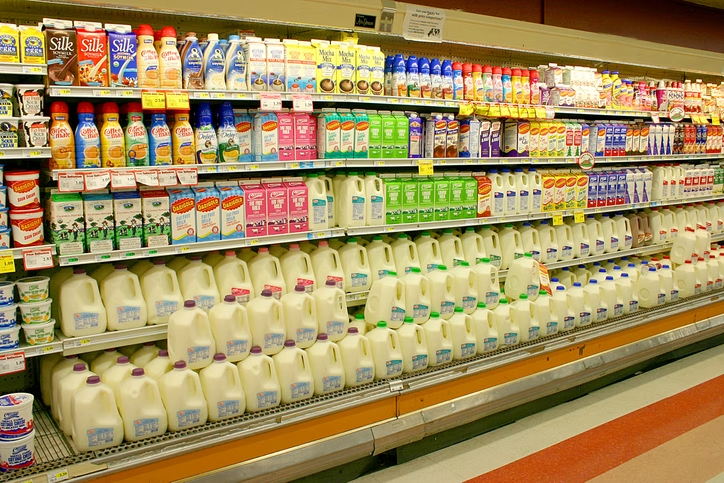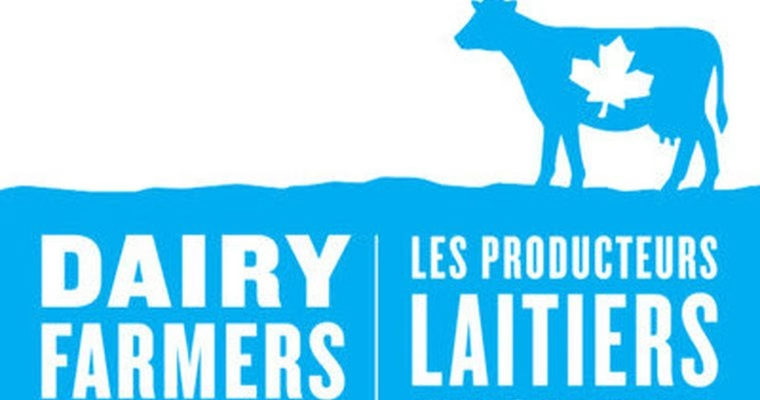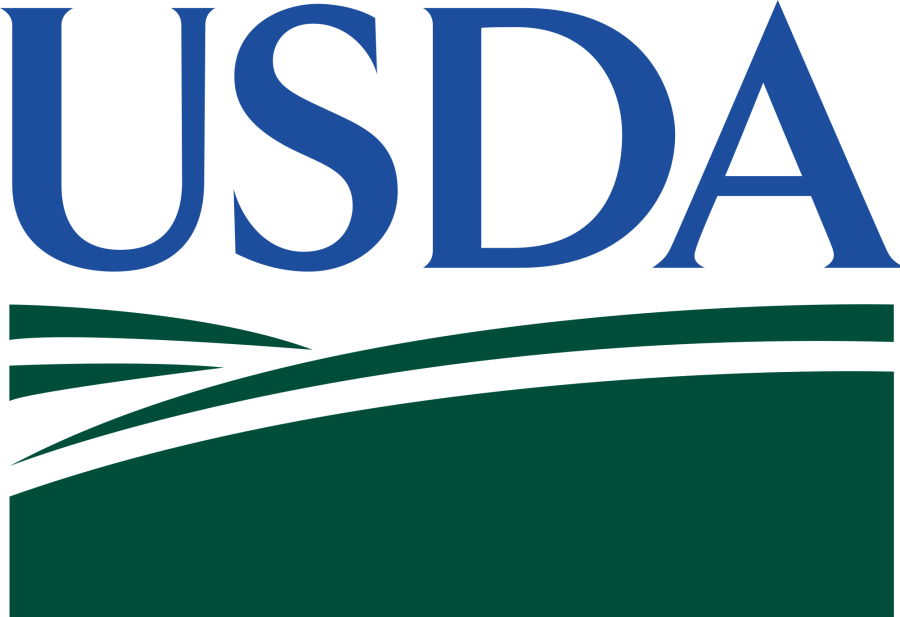Meet the pioneers behind the World Dairy Expo. Learn how Gene Nelson, Norman E. Magnussen, Allen Hetts, and Howard Voegeli transformed the dairy industry.
The World Dairy Expo is more than just an agricultural show; it’s a global hub for innovation, quality, and community. With its extensive commercial exhibits, competitive cattle shows, and educational seminars, the Expo is vital for showcasing cutting-edge innovations and encouraging global collaboration. At the heart of this monumental event are its four founding fathers:
- Gene Nelson – A pioneer committed to achieving excellence in dairy farming.
- Norman E. Magnussen – A master breeder whose impact extends across continents.
- Allen Hetts – A recognized judge and business advocate.
- Howard Voegeli – An inventive thinker who made fantasies a reality.
Join us as we explore these fantastic men’s lives and legacies, focusing on their vital contributions to the World Dairy Expo and the dairy farming community. By recognizing their innovative leadership, we commemorate their memories while inspiring current and future generations of dairy farmers to keep pushing the frontiers of what is possible. Celebrating their experiences promotes the shared values and feeling of community that make dairy farming more than a job; it’s a lifestyle.
Gene Nelson: A Visionary Cultivating Holsteins and Undying Community Spirit at Gray View Farms
Gene Nelson’s dairy farming career started at Gray View Farms, a family-owned business in Racine County, Wisconsin, founded by his great-grandfather in 1882. Gene, a dairy industry champion for premium Holsteins, inherited a 200-acre family farm with different agricultural operations such as flax, sugar beets, and cabbage production, in addition to cow milking.
Gray View Farms thrived under Gene’s leadership, becoming well-known in the dairy industry for its excellent Holstein herd. With a firm conviction in quality over quantity, Gene’s commitment to raising “good cows” earned him farm notoriety and raised industry standards. His remarkable recall for pedigrees and a keen eye for quality animals helped to establish Gray View as a model of excellence.
Gene’s outstanding achievements were not limited to his farm. He was a crucial player in the Holstein Association at the state and national levels. One of his most significant accomplishments was his role in producing the exact type of model Holstein. This project required several committee meetings and collaborative efforts, displaying his unrelenting dedication to breed advancement. His ability to interact with other breeders and actively participate in these organizations developed a feeling of community and shared purpose.
Gene’s services went beyond just participating in shows; he evaluated dairy cattle worldwide, bringing his experience to nations such as Japan and Mexico. His education started at the University of Wisconsin-Madison, where he received a Bachelor of Science degree in 1941. Gene’s early failure exemplifies his incredible resilience. After failing to join the university’s dairy cow judging squad, he switched to livestock judging. His dedication paid off as he guided his team to a national championship. Gene’s unrelenting quest for knowledge and steadfast devotion to perfection catapulted him to the position of recognized judge, making a lasting imprint in every area he entered.
Gene Nelson, a visionary, played a pivotal role in establishing the World Dairy Expo. Recognizing the Waterloo show’s dwindling popularity, he and three other founder members imagined a big platform to bring together the world’s dairy business in the heart of Wisconsin. Gene’s devotion was so intense that he was ready to mortgage Gray View Farms to fund the Expo’s start, demonstrating his conviction in the show’s potential significance.
The World Dairy Expo is built on Gene Nelson’s heritage. His tale is one of tenacity, enthusiasm, and unshakable devotion to advancing the dairy business. These attributes will continue to inspire future generations of dairy farmers and industry executives.
Norman E. Magnussen: Master Breeder, Market Innovator, and Revered Judge
Norman E. Magnussen is well-known in the dairy industry for his cattle expertise and unrivaled ability to sell and appraise them. His career in the dairy industry was distinguished by an unwavering desire to succeed and a vision that saw possibilities in every cow and sale. Starting in northern Wisconsin, Norman E. rapidly established himself as a dairy business powerhouse. His extensive experience with herds on the East Coast paved the way for a remarkable career.
Norman E. established the Norvic Brown Swiss herd, which became a symbol of his breeding skills. With a sharp eye for genetics and an unwavering devotion to quality, he boosted the standing of Brown Swiss cattle not just in the United States but worldwide. Norman E.’s participation with the Norvic herd went beyond breeding; he was essential in exhibiting these cattle at different prominent exhibitions, earning acclaim and honors.
Norman E.’s reputation as a superb salesperson is similarly noteworthy. Over a 30-year career, he oversaw sales in 39 states and Canada, demonstrating his skill and reputation. His position as proprietor of Brown Swiss Sales Service reinforced his reputation as a critical player in the dairy sales business. Renowned sales events, such as the World Premier Brown Swiss Sale at the World Dairy Expo, currently administered by his son Norman C. Magnussen, are a lasting homage to his influence.
Norman E. Magnussen rose from humble beginnings, but his perseverance and passion for exceptional cattle catapulted him to incredible heights. Norman’s stories of judging cattle all over the globe, from Japan to South America, and his performances in the most prestigious show rings paint a picture of a man with globally renowned skill. His commitment to the dairy sector was very personal, and he developed long-lasting relationships with breeders and other judges.
Norman E. Magnussen’s dairy career was more than simply cattle; it was about people, connections, and a strong affection for an industry he helped develop. Through his son’s eyes, we witness a heritage that blends superb breeding, inventive salesmanship, and a personality that evokes respect and adoration on all continents.
Allen Hetts: A Name Synonymous with Dedication and Innovation
Allen Hetts, who identified with passion and invention, began his dairy adventure early. At 18, when his father died unexpectedly, Allen took over Crescent Beauty Farm. He rapidly exhibited the traits of a natural leader. His early start was more than just a coincidence; it directly resulted from his ambition and desire.
Born into a dairy-loving family, Allen was the third generation of Hetts to lead Crescent Beauty Farm, a job he eagerly accepted. Crescent Beauty was initially registered by George Hart of Manistee, Michigan, in 1896. Allen’s grandpa, George Hetts, saw the potential and purchased four animals from I.M. Shoreman, including Crescent Beauty Buttermaid, a future National Grand Champion in 1913.
When Allen took over, he had the enormous task of combining two crucial bloodlines—Crescent Beauty and Admirals—into a cohesive, excellent herd. Allen strengthened these lines with precise integration, adding to the farm’s well-deserved reputation for excellence. His unwavering commitment to quality and innovation catapulted Crescent Beauty to the pinnacle of genetic supremacy.
Allen’s ambitions went beyond his farm gates. He was inspired to provide a platform to elevate the dairy business, which led to his essential involvement in launching the World Dairy Expo. Allen’s vision for Crescent Beauty and his effective lobbying for the Expo were inextricably linked by his unwavering quest for perfection. His strategic assistance helped secure Madison’s Central National Show status, vital to the Expo’s early survival and long-term success.
Allen’s enthusiasm and natural ability to inspire others around him were necessary for his many accomplishments. Allen aimed to transform Madison into a worldwide dairy powerhouse beyond personal achievement. His dogged pursuit of this idea required several visits, lengthy talks, and a steadfast conviction in the show’s promise. The first World Dairy Expo in 1967, which gathered over 1,200 animals, is a powerful monument to his devotion and insight.
Allen Hetts was significantly more than an ordinary farmer. His legacy lives on via Crescent Beauty’s countless honors and banners and the colorful and widely known event, the World Dairy Expo. Hetts’ career is distinguished by steadfast commitment, inventive thinking, and a substantial impact on the dairy industry—characteristics that continue to inspire and encourage future generations of dairy farmers.
Howard Voegeli: From Family Legacy to Global Innovation at Voegeli Farms
Howard Voegeli’s narrative starts at Voegeli Farms in Monticello, Wisconsin, where his family has a long history. Yost homesteaded the farm in 1854, and subsequent generations expanded on the initial 320-acre foundation. In 1895, the Voegeli switched to Brown Swiss cattle, ushering in a lineage that continues to flourish today, presently managed by the family’s seventh generation.
Howard Voegeli was more than simply a steward of this rich history; he was a visionary who valued innovation and an inventive approach to problem-solving. His ability to think beyond the box was evident in many facets of his life, including his dairy business and contributions to the World Dairy Expo.
Howard’s approach to worldwide cattle marketing illustrates his inventive problem-solving abilities. Despite Monticello’s limited location, Howard established broad international contacts. He traded cattle worldwide despite needing more contemporary technology and smooth worldwide connections. His efforts included personal visits, such as an eventful journey to the Dominican Republic when he almost had to dump livestock in midair owing to maritime issues. Howard’s willingness to overcome such hurdles demonstrated his creative spirit and ability to turn barriers into possibilities.
His creative tactics went beyond cattle deals. Howard pioneered embryo transfer procedures, transporting fresh embryos to Dominican and Mexican clientele. This strategy was groundbreaking, especially given the technology limits of the 1970s. Howard’s vision of inventing a viable method of genetic export established a precedent for current processes, indicating his long-term effect on the business.
Howard’s inventiveness was not restricted to his land. He played an essential part in creating the World Dairy Expo. Howard used his broad network and persuasive ability to gain critical support and financing from the Wisconsin Department of Agriculture for the event. His contact with authorities emphasized the need to organize the Expo, which he saw as critical to Wisconsin’s continued prominence in the dairy industry.
His ingenuity was also evident in his unique flare to each engagement. Howard, a musician at heart, met his future wife, Alice, during a polka band performance. His outgoing personality and Alice’s unwavering support helped foster the community spirit that Voegeli Farms has become renowned for. This spirit of hospitality and relationship-building still defines the farm today.
Howard Voegeli’s inventive problem-solving and lasting legacy at Voegeli Farms demonstrate an extraordinary combination of tradition and forward-thinking. His contributions to the World Dairy Expo and the dairy community demonstrate his creativity, ensuring that future generations will feel his legacy.
Forging a Global Legacy: The Genesis of the World Dairy Expo Amidst Industry Evolution
The World Dairy Expo was founded in 1967 during a substantial transition in the dairy business. In the mid-twentieth century, dairy farming in the United States was typified by small, family-owned farms that relied heavily on conventional breeding and milk production techniques. However, the postwar period saw a surge of technical innovation and scientific achievement. These included artificial insemination, which transformed herd genetics, and better milking technology, which increased output.
During these technical advances, the dairy market became more competitive and worldwide. Farmers sought new methods to promote their exceptional genetics and interact with customers locally and globally. Traditional agricultural fairs failed to fulfill the dairy industry’s changing demands since they needed more infrastructure and attention to handle large-scale dairy cow displays.
Economic constraints on smaller farms increased in the early 1960s, with many operators battling to stay afloat amid growing production costs and market instability. The necessity for a centralized, high-profile event where breeders could promote their cattle and network with prospective purchasers became clear. Technology advancements, economic concerns, and a desire for global participation influenced the World Dairy Expo’s founding fathers.
Gene Nelson, Norman E. Magnussen, Allen Hetts, and Howard Voegeli were not just reacting to industry developments but also motivated by a shared commitment to dairy quality and community spirit. They envisioned an event that was more than a cow show; they wanted to build a worldwide hub for the dairy sector. Their forethought guaranteed that the World Dairy Expo promoted innovation, education, and worldwide contacts, establishing it as a critical event for the dairy industry.
The Enduring Legacy of the Founding Fathers: Shaping the World Dairy Expo and Beyond
Gene Nelson, Norman E. Magnussen, Allen Hetts, and Howard Voegeli’s legacies have left an indelible mark on today’s dairy sector. These trailblazers made distinct visionary contributions that influenced the World Dairy Expo and current dairy farming techniques worldwide.
Gene Nelson’s focus on quality in Holsteins and steadfast community spirit are guiding concepts that still reverberate on modern dairy farms. His commitment to raising outstanding cattle has established a standard for genetic selection, inspiring farmers to strive for excellence in their herds. Today’s dairy producers continue pursuing high genetic standards, recognizing how excellent cattle can improve production and herd health.
Norman E. Magnussen’s contributions as a master breeder and market inventor paved the way for market-driven breeding programs and worldwide sales tactics. His pioneering efforts in sales management, particularly in promoting the Brown Swiss breed, established a model for modern dairy marketing procedures. Breed associations and sales managers continue to use his strategies to acquire worldwide reach and sustain strong sales channels.
Allen Hetts’ dedication to invention, progress, and determination have impacted dairy production. His drive to integrate scientific developments and breeding methods has pushed the sector toward precision farming. Modern dairy farms today use data-driven decision-making, genetic analysis, and modern breeding procedures, demonstrating Hetts’ forward-thinking approach.
Howard Voegeli’s innovative problem-solving and worldwide outreach have created an atmosphere where international cooperation and export initiatives flourish. His early use of embryo transfer and his unwavering quest for genetic superiority have become the norm in current breeding operations. Cross-border interchange of cattle genetics is currently a cornerstone of the dairy sector, with continuing improvements in genetic variety and farm production throughout the globe.
These founding fathers’ principles and innovations—quality breeding, market development, scientific integration, and innovative problem solving—remain influential in dairy production. As the sector evolves, its legacy lives on, encouraging future generations of dairy farmers to long-term success and innovation in a globalized market.
The Bottom Line
In recognizing the legacies of Gene Nelson, Norman E. Magnussen, Allen Hetts, and Howard Voegeli, we acknowledge the foundations upon which the World Dairy Expo stands. Their expertise, dedication, and excitement for the dairy industry have set new dairy farming and breeding standards, making an unforgettable impression on the global dairy community. Reflecting on their achievements may inspire us as dairy farmers to enhance our operations. Whether it’s Gene Nelson’s dedication to Holstein cattle, Norman E. Magnussen’s contributions to market advancements, Allen Hetts’ unshakable tenacity, or Howard Voegeli’s innovative problem-solving, essential lessons must be learned and used in our daily lives.
Key Takeaways:
- The combined vision and expertise of the founding fathers established the World Dairy Expo as a premier event in the dairy industry.
- Gene Nelson’s dedication to Holsteins and community efforts was instrumental in founding Gray View Farms.
- Norman E. Magnussen’s innovation in breeding and sales brought significant advancements to the dairy sector.
- Allen Hetts’ relentless drive and innovative methods fostered success at Crescent Beauty Farm.
- Howard Voegeli’s creative solutions and global outreach expanded Voegeli Farms’ influence internationally.
- The World Dairy Expo has become a critical platform for promoting dairy innovations, education, and global networking since its inception in 1967.
- Nelson, Magnussen, Hetts, and Voegeli’s legacies continue to shape modern dairy farming practices and international relationships within the industry.
Summary:
The story of the four founding fathers of the World Dairy Expo—Gene Nelson, Norman E. Magnussen, Allen Hetts, and Howard Voegeli—is one of vision, dedication, and community spirit. Each brought unique strengths: Gene Nelson’s passion for Holsteins and community-building efforts at Gray View Farms; Norman E. Magnussen’s mastery in breeding and innovation in dairy sales; Allen Hetts’ relentless drive and innovative approaches at Crescent Beauty Farm; and Howard Voegeli’s creativity and global outreach from Voegeli Farms. Together, their combined expertise and unwavering commitment laid the groundwork for a globally renowned dairy exhibition that showcases the industry’s best and fosters international relationships and advances in dairy farming. Founded in 1967, the event aimed to promote innovation, education, and global contacts, making it a critical event for the dairy sector. The legacies of these pioneers have left an indelible mark on modern dairy farming, with Nelson’s focus on Holstein cattle, Magnussen’s market-driven breeding programs and sales tactics, Hetts’ leadership and problem-solving skills, and Voegeli’s global outreach initiatives.
Learn more:
- The Stars Shine at the 2014 World Dairy Expo
- Navigate the World Dairy Expo Like a Pro: The Ultimate Guide for Dairy Enthusiasts
- From Family Farm to Industry Leader: The Journey of Larson Acres, 2024 World Dairy Expo Dairy Producers of the Year
 Join the Revolution!
Join the Revolution!
Bullvine Daily is your essential e-zine for staying ahead in the dairy industry. With over 30,000 subscribers, we bring you the week’s top news, helping you manage tasks efficiently. Stay informed about milk production, tech adoption, and more, so you can concentrate on your dairy operations.







 Join the Revolution!
Join the Revolution!










